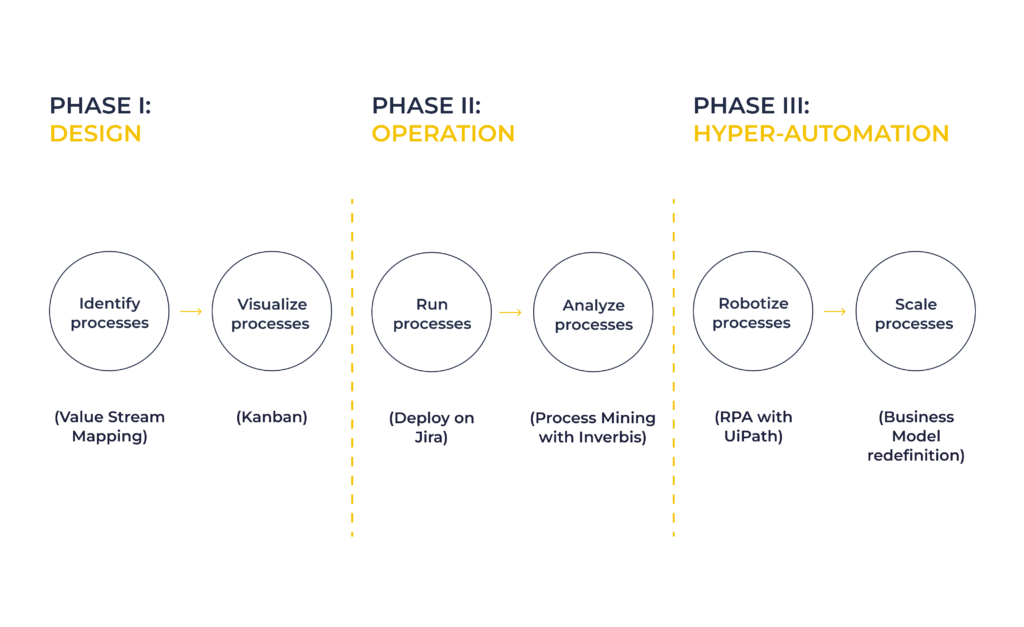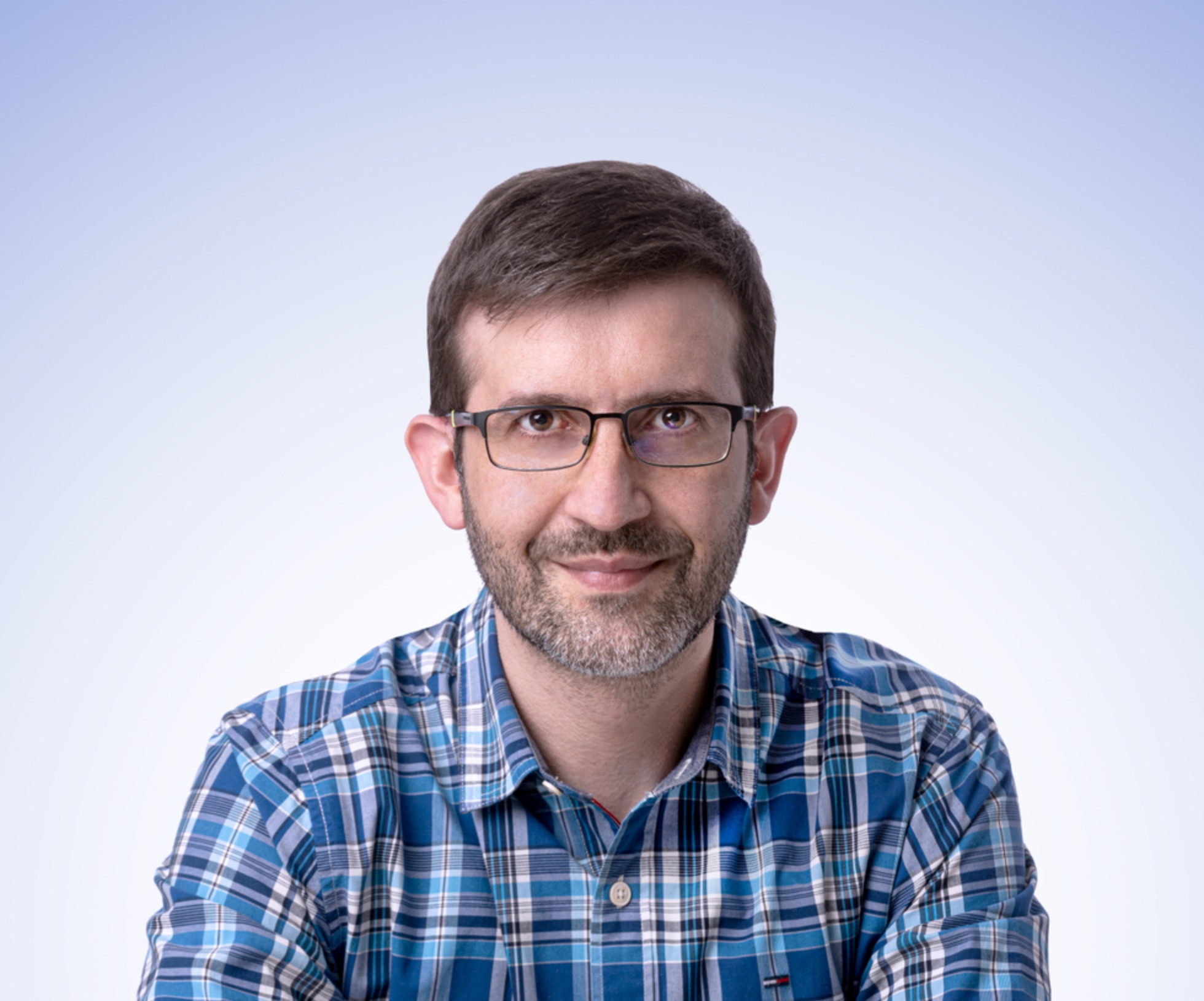Process mining is a technique that reconstructs an organization’s workflow using information collected in the logs and databases of information systems. For many companies, this technology plays a key role in supporting business activity. Thanks to process mining, organizations can obtain entirely new and high-impact layers of analysis.
On June 30, 2022, during the TecnoFor ESM Day, Pablo Grueso, CEO of TecnoFor, presented the Jira connector for the first time. The result of collaboration with Inverbis, it allows the instant connection of your Jira with the Inverbis process mining solution. With the help of this connector, it is possible to analyze the real data of a process in just a few minutes, collecting the necessary data, structuring it, and preparing it for an accurate visualization of the workflow.
In an interview with Pablo Grueso, we analyzed the scope of process mining, how it has improved the processes of his organization, and the opportunities that process mining offers to organizations.
You are a process intelligence consultancy in which technology is the fundamental axis. As you start to use process mining, are you oriented to improvement or automation? Can you tell us more about your way of approaching projects?
Pablo Grueso: We are a consulting firm with more than 15 years of experience in the market, and we have always been associated with technology and processes. It is something that defines us, and we have matured along with the sector. Based on our experience, we have built our “Process Intelligence” approach, which, as a maturity model, allows us to place the conversation with the client at the correct point in the flow.
When discussing a very low maturity, we must start by identifying processes and visualizing the workflow. In a later phase, we would talk about operationalizing these processes using tools, such as Jira, that help us model behaviors and provide us with data that we can analyze. Obtaining data will only provide you with benefits if you analyze it to obtain new discoveries and ideas for improvement: this is where Inverbis and process mining can help. From here, and to the extent that we reduce the variability of the process, we can make the leap to the robotization of processes with robotic process automation (RPA), or rather, parts of the process. It is a very common error to underestimate the variability in a process in which a human intervenes, as they do in the majority of processes.

What do you achieve thanks to process mining that would not be achieved with another discipline?
Pablo Grueso: Most companies use workflow tools simply to order the work, to have a single location where data can be recorded without losing anything. However, there are some companies that believe in data analytics, in controlling the evolution and efficiency of their business using the data they already have in their Jira or other tools. Until now the focus has been exclusively on manual control of KPIs, designed with greater or lesser success, or on analytics based on Business Intelligence. What happens is that with a BI approach, the data that is tracked usually has to do with costs, with efforts dedicated to tasks, among other things. This approach “forgets” the process.
This is seen a lot when you work with a client who has a Lean mindset, and you start talking to him about lead time, cycle time, and process variability. You realize that the tools are not prepared to extract these metrics, and with a BI approach, it is not practical or feasible to do that analysis. This is exactly where process mining comes in, to provide a completely new, high-impact layer of analysis to the client.
In our experience, the degree of maturity in terms of process management and improvement in many sectors is low: workflows are either not formalized or have many non-traceable parts. How do you work on these types of projects?
Pablo Grueso: I totally agree that companies still greatly lack maturity in process management, with some notable exceptions.
Despite the fact that we have been insisting on it for almost two decades, there is still not a lot of awareness about what a process is, and why it is important. Between companies that only focus on “delivering whatever” and those that are always up to their necks in water for one reason or another, it is very difficult to introduce a mindset that values the construction of a process map and analysis of where efficiencies can be achieved. For the first group, the hero’s feeling of always putting out fires is much more attractive, and for the second, simply fighting for survival already consumes any improvement initiative.
That is why the first step is to select companies that are willing to get involved in a process improvement project, as they already have the right mindset or are in a position to acquire it easily. Then the key is to use the data they already have, without making changes to systems or the organization as a whole, starting from where they are, even if the granularity is high, or the variability does not allow conclusive results to be obtained at first.
No matter how bad the client thinks they are, there is always valuable information to be gained, and clues as to where to continue investigating and improving. Future changes will arise from there, but in a very organic way, which is why the mindset is essential.
Part of your core purpose is the application of Agile methodologies; how do you apply these frameworks and work models in environments other than development, such as marketing or communication?
Pablo Grueso: There is a lot of confusion in the sector regarding what Agile means; it is still often confused with Scrum, or working in sprints. Scrum has been a fundamental framework for the dissemination of the Agile mindset, as its owners have been best able to explain their proposal and create a community around it. I am convinced that without Scrum, Agile would not have become mainstream.
Now, the pity for those of us who work in processes is that a strictly iterative and incremental product development framework has taken the lead, and it has generated a lot of confusion. Many companies have jumped to managing backlogs and making Sprint Plannings without stopping to reflect on whether they were building a product or operating a service, forcing Scrum to accommodate for these omissions. But it works much more often than you would imagine.
However, to adopt an Agile mindset in non-product companies, there are many options, almost all coming from Lean and the TPS (Toyota Production System), such as Kanban. There are those who argue that Agile can be discussed in frames prior to the signing of the manifesto, but these are debates of academic purists, which I love to have, but with a beer and not when helping a company.
And finally, something else about TecnoFor. You have an initiative policy called “Mi Casa Es Tu Casa” (my Home is your Home) in which you give up part of your space so that other companies or people can use your facilities for events or work. How did this open-door initiative come about? Any interesting anecdotes to share?
Pablo Grueso: Mi Casa Es Tu Casa is an initiative that has a lot to do with who TecnoFor is, on many levels.
Our company started in 2004 as a training center. We have always had central and spacious offices, and since 2012 we have had very representative premises in the center of Madrid, in the middle of Puerta de Alcalá, on the ground floor, with views of the Retiro.
When the pandemic arrived, we all went home, both staff and students, leaving the center practically empty. Every time I went to the office to do something, my heart broke to see an installation like this abandoned. As the months passed, we had become a remote company and the workers were not going to return. The students adapted very well to remote working, in fact, we continued to increase our income, but we felt certain that face-to-face training would return sooner or later, due to the enhanced quality of the experiential component it allows, so we did not want to get rid of our premises. In addition, many exams continued to be done in person, so we needed a physical space to operate.
So, if you have an asset that you don’t want to part with, but that you’re not currently using, why not make it available to the community for free?
This is very much in line with one of TecnoFor’s values: empathy. There are many people who have been left without an office due to the pandemic, who either need a room for a short time, are overwhelmed by working alone, or are passing through Madrid. We offer these people a solution that costs us very little and helps them a lot. That is our concept of helping the community.
Access to this space is available through our website and we have already hosted a multitude of events: meetups, presentations of several books, workshops, and meetings. We only ask that guests respect the other people who are working in the office.
If you would like to learn more about our solution and how we apply Value Stream Mining and Process Mining at your company, click on this link to register and request your demo.

![[Webinar] Breaking down data silos to unleash the power of Process Mining](https://web.inverbisanalytics.com/wp-content/uploads/2023/06/breaking_silos_tx_inverbis_bothtimes-400x250.jpg)

